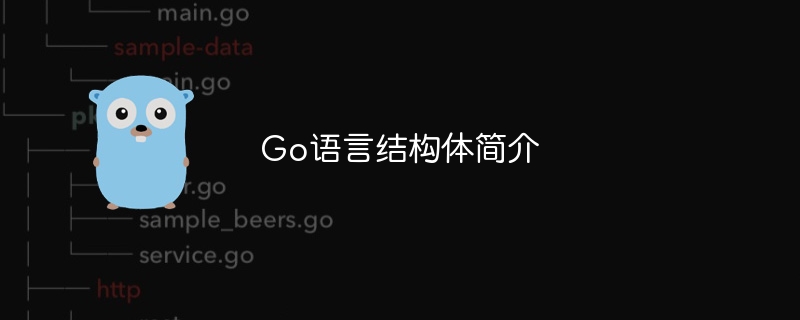

Introduction to Go language structure
Go language is a fast, efficient, and concurrent programming language. Its design goal is to be simple and easy to use. Structure ( struct) is one of the very important data types in the Go language. A structure can be understood as a custom data type that can be used to encapsulate a set of related data fields, similar to classes in other programming languages.
In the Go language, define the structure using the type keyword plus the structure name and field information, for example:
type Person struct {
Name string
Age int
Gender string
}The above code defines a structure named Person, which contains three fields: Name (name), Age (age), Gender(gender).
To create an instance of a structure, you can use the structure name and field value, for example:
person := Person{
Name: "张三",
Age: 25,
Gender: "男",
}You can use the . operator to access each field of the structure instance, for example:
fmt.Println("姓名:", person.Name)
fmt.Println("年龄:", person.Age)
fmt.Println("性别:", person.Gender)in Go In the language, structures can be nested, for example:
type Address struct {
City string
Street string
}
type Employee struct {
Person
Address
Salary float64
}
employee := Employee{
Person: Person{
Name: "李四",
Age: 30,
Gender: "女",
},
Address: Address{
City: "北京",
Street: "中关村",
},
Salary: 8000.0,
} In the above example, the Employee structure is nested with Person and AddressStructure realizes the combination and reuse of data.
In Go language, structures can define methods to operate structure instances, for example:
func (p Person) PrintInfo() {
fmt.Printf("姓名:%s,年龄:%d,性别:%s
", p.Name, p.Age, p.Gender)
}
employee.PrintInfo()Definition and calling of methods and functions Similar, but methods are associated with structures for better organization and management of code.
Summary:
Structure is a very important data type in the Go language. Through the structure, you can easily define complex data structures and implement object-oriented programming ideas. The flexibility and ease of use of structures make the Go language excellent at processing complex data structures, providing developers with powerful tools.
The application of structures is not limited to the above examples. Developers can flexibly use structures according to their own needs and design ideas to improve the readability and maintainability of the code. I hope that through the introduction of this article, readers will have a deeper understanding of the structures in the Go language.
The above is the detailed content of Introduction to Go language structures. For more information, please follow other related articles on the PHP Chinese website!
 Usage of Type keyword in Go
Usage of Type keyword in Go
 How to implement linked list in go
How to implement linked list in go
 What are the Go language programming software?
What are the Go language programming software?
 How to learn go language from 0 basics
How to learn go language from 0 basics
 What are the methods to implement operator overloading in Go language?
What are the methods to implement operator overloading in Go language?
 What are the operators in Go language?
What are the operators in Go language?
 Data encryption storage measures
Data encryption storage measures
 What are the common tomcat vulnerabilities?
What are the common tomcat vulnerabilities?




